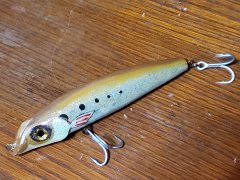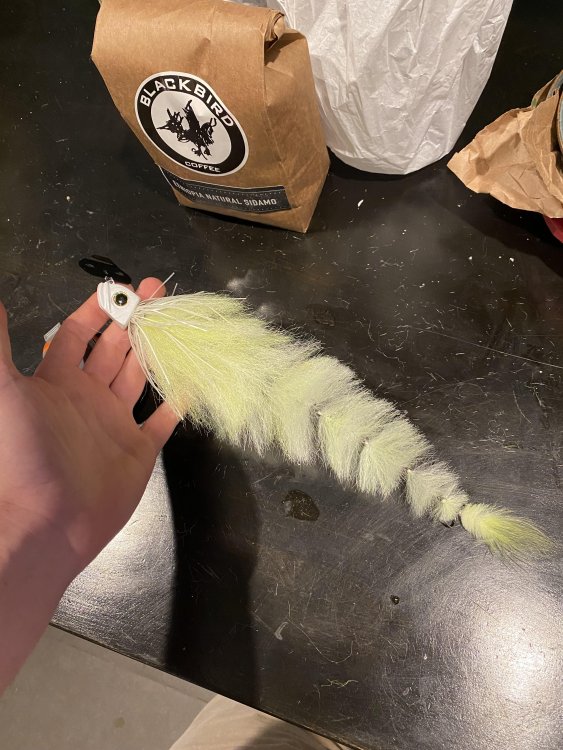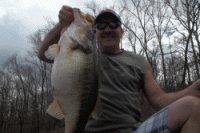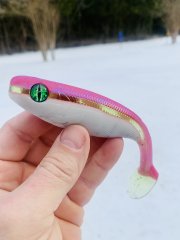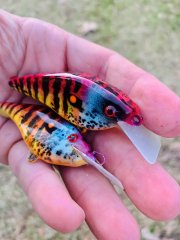Leaderboard
-
in all areas
- All areas
- Images
- Image Comments
- Image Reviews
- Albums
- Album Comments
- Album Reviews
- Topics
- Posts
- Stories
- Story Comments
- Story Reviews
- Classified Ads
- Classified Ad Comments
- Classified Ad Reviews
- Records
- Record Comments
- Record Reviews
- Websites
- Website Comments
- Website Reviews
- Status Updates
- Status Replies
-
Custom Date
-
All time
February 2 2011 - April 19 2024
-
Year
April 19 2023 - April 19 2024
-
Month
March 19 2024 - April 19 2024
-
Week
April 12 2024 - April 19 2024
-
Today
April 19 2024
-
Custom Date
04/19/2022 - 04/19/2022
-
All time
Popular Content
Showing content with the highest reputation on 04/19/2022 in all areas
-
As long as you have the hook hangers and tie point in the master well making the mold it is easy. Just put the harness in and clamp your mold. Really no need for a full harness if you are pouring your hardware into the lure. I use 1 1/2 inch eye screws in my pike lures and no issues pulling out or turning. I have also used twisted wire with two eyes so the resin basically creates a peg through the end inside the body. I have suspended rattle chambers using 4lb mono fishing line even when you pour things into the bait they are encapsulated in resin and hold extremely well. Resin baits are also tougher then wood so odds of tear out is much lower2 points
-
I'm a believer in scents at times & this proves it without a doubt.2 points
-
Hey all. On another thread there was a great conversation about resin, and I would love to learn more! I just bought all the basic molding stuff and am excited to get started.1 point
-
1 point
-
Anyone making their own blades for bladed jigs (chatterbaits)? I've been playing with mixing fly tying techniques into conventional lures and an issue I've found is that big trailers with a lot of drag will keep the blade from vibrating because the force of the water pressure on the blade isn't enough to counteract the drag force on the trailer and the blade just stays in the forward position. So It's got me wondering how do manufacturers decide where to drill the holes on the blade to attach the clip? I haven't thrown my latest one yet (see below) so not sure if I'll have to modify the blade but I'm expecting I'll have to drill another hole in the blade closer to the jig head to get it to vibrate. This one's 12.5in total length, tied onto a 2oz picasso shock blade. I know the hook situation isn't good but I can fix that later once I get the swim I want.1 point
-
1 point
-
I just tried to match the distance between the two holes where the snap goes, and drilled a hole to move the snap down.1 point
-
1 point
-
I am not experienced with this, but you can try to find a spreadsheet that shows the ratios of microspheres and resin and what the specific gravity would be. If you can get it buoyant enough to have the specific gravity of maple or something similar, you could weight it similar to how you would weigh a wooden lure. I believe that the only real differences with resin and wood when it comes to action (not working with it) is the buoyancy, the strength, and the need to seal it.1 point
-
Very smart of you to mention the microspheres and their risk of harm to your lungs. Yes, pure resin sinks, and you don't absolutely have to use birdshot but it is a way to get very consistent weights if you plan to reproduce the same lure multiple times. You can always drill a lead hole and place lead in it. One thing I should note, though, is that if you are making massive baits, like 10- 20 inch lures you would ideally have to weigh with birdshot because the lead in the holes would be so heavy that it could literally fall out of the bait over time. The problem with this, though, is that you can't get super precise weights with birdshot, like you can with a lead hole. What you could do to avoid this is take a Dremel, and use a small (roughly 1/4") disc bit and make a little circle for the lead to grab onto to prevent it from falling out.1 point
-
So, just to kick this off, as of 2022, what are some of the best resins and microspheres to use for lure making and their advantages and disadvantages? The general consensus is that Alumilite is among the best for resins and other resin molding stuff, but they make so many different resins. Also that Smooth-On (Mold Max 30, I think) is great for making the molds themselves.1 point
-
That's a smart idea. This topic would get wayyy off topic if we went down that rabbit hole haha1 point
-
I would love to learn more about resin and pouring and stuff. I just started another thread to move that conversation off this one. Great stuff!1 point
-
Little late seeing this thread but I highly recommend "XSelect Marabou" from Hareline. I do a lot of fly tying and this is the only marabou I buy now. Lure looks awesome.1 point
-
I've noticed that once a spot in the plastic starts to burn the scorching continues from that spot. Waves bounce around inside the microwave oven and sometimes there can be a "hot spot" where more waves converge. Make sure the fan is turning freely (fan inside is used to scatter waves) and also make sure there are no rust spots, etc that could change the way waves bounce around. Might also try stirring a little more or more often, especially after plastic has gelled. The thicker plastic cannot distribute heat as much by convection (currents) but mostly by conduction which is a much slower process.1 point
-
1 point
-
1 point
-
1 point
-
Just to answer Deadly Duck’s original post, good baits are symmetrical and have their hardware exactly on the center line of the body. This suggests you mark a center line all around the bait after the blank is first cut out but BEFORE you start shaping and rounding it. Weight placement is variable but in my experience, many commercial custom baits use a one piece belly hanger/ballast weight. Lurepartsonline sells them. Of course, you can weight your bait wherever and however you want and build your hook hangers and line tie however too. But generally I like mine at the hanger with any additional ballast placed in front of the hanger.1 point
-
1 point
-
I learned a lot from screwing up building lures over the last 25+years. I didn’t have YouTube or much information it was just carve and see if it works There was a 10year period I built min 10 different lures a day and tested them in my personal pond. Most crude or completely odd looking lipless lures My point don’t just rely on available information only because it will limit your knowledge. If you have an idea try it experiment screw up and adjust.1 point
-
Simple trick with lipless crankbaits move the weight up from the belly. The instability will give a wider shimmy. About 1/4 up from the belly often works well As for shape wider forehead wider wobble. Thinner will be faster and tighter Slope of the forehead plays a roll too best thing to do is make a few basic designs and test a few different things till you find what you like. Then make a nice one with paint and clear coat1 point
-
I think people don't know what they are getting into when they say " I am making a glide bait" Hands down it's the most temperamental bait to make!! the bait characteristics will change with elevation, temperature, line size, snaps, no snap, barometric pressure...and folks there are many more considerations that can/will effect a glide bait. I am not saying don't try to make a glide bait but get ready to be frustrated at almost every turn to get a decent glide bait and not a paper weight.1 point


